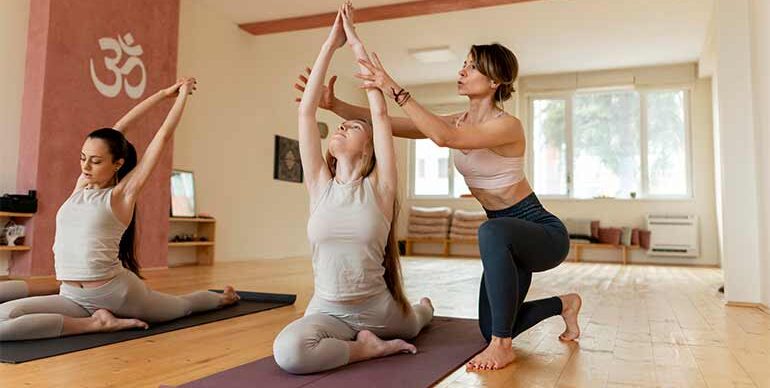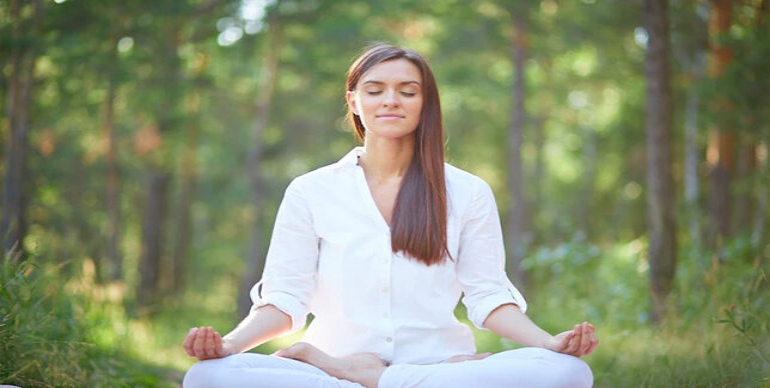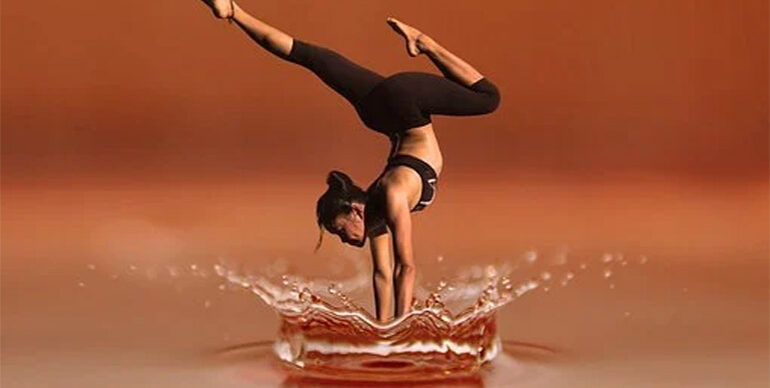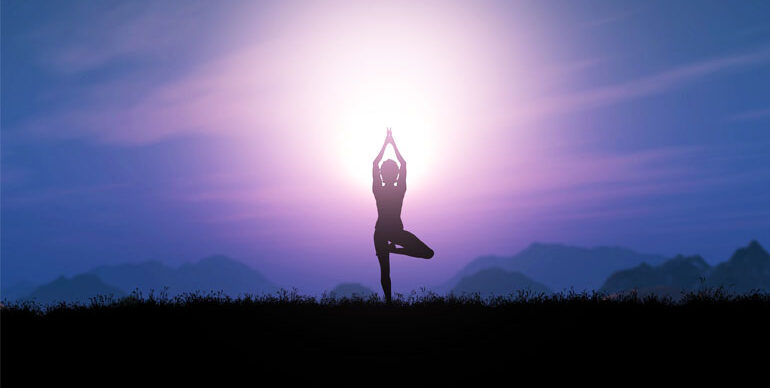
On World Yoga Day which is today, there is an unprecedented spotlight on Yoga the likes of which the world has never seen before. Yoga is now considered universally as one of the great wellness inventions of the human race. Geographically it may have originated in India, but it rightfully belongs to the whole world. Yoga is a dynamic inner engineering process to weather whatever stresses and challenges that the universe can throw at us and keep oneself grounded, rooted and in harmony with the elements, of which we are all a part of.
There are many young people, both men and women who are actively considering a career in Yoga now that even the Governments of all nations have officially recognized the value of Yoga and are encouraging it’s practice by citizens in schools, colleges and workplaces. Correspondingly, in India where the current administration has taken the lead in spreading Yoga nationally and internationally, the current job and earning potential for yoga teachers has increased exponentially and good yoga trainers are going to be in great demand in the near future. Accordingly at Wellintra where we groom and retain some of the best yoga trainers in your city, we dispense with a lot of useful information on our blog. Let us look in detail at the elements of conducting a yoga class.
Conducting a Yoga Class
There are many important elements when it comes to becoming an excellent yoga teacher. If you are new to the job, it is important for you to master the basic essentials of a yoga class.
Yoga Class Space
Before teaching a class, try and have a look at the room where you will be teaching. Though every yoga teacher wishes to teach in a studio properly designed for yoga – with wooden flooring, muted or natural lighting, lots of props, a lotus or OM painted on the walls and some lemongrass incense sticks, the large majority of Yoga across the world is taught in less auspicious surroundings such as gyms, fitness centres, community centres, schools, offices, temples, homes etc. Each space has it’s own unique features and challenges.
The Home Base
In a group yoga class setting, you should decide where your home base should be. Home base is the area where the teacher is in full view of all students and vice versa. This is where the teacher can lay down his / her own mat, props and music if any. Ideally, the home base should be opposite the door from where students enter the room. In a rectangular room, the teacher can stand in the middle of a long side of the room. If there is a mirror in the room, position your students against it so that they may see themselves from time and time and adjust their poses.
Yoga Mat Set-up
Depending on the shape and size of the room, yoga mats can be placed in rows with either the long side or the short side of the mat facing the teacher. In yoga sessions with smaller number of attendees, the yoga mats can be placed in a circle or semi-circle. Ask tall or large students to move to the back of the room so that they do not block other’s views of you.
Music
If you are carrying a bluetooth speaker connected to your phone or if a music system is provided by the facility, then learn how to use it properly much before the class! You dont want to be seen fidgeting with the speaker trying to turn it on or have the battery of your speaker or phone run out midway between a class.
Administration
Teaching yoga is a business too and a lot of young teachers forget that! Fees for a yoga session must always be taken in advance whether it be for a single private session or fees for an entire month. You want to concentrate on smooth operations of your yoga class or yoga studio and chasing people for unpaid dues is the last thing that you should be doing! If you are employed with a fitness consultancy like ours or another institution, learn their do’s and dont’s and comply with them. A good and honest reputation goes a long way in ensuring that you have a long and steady career as a yoga teacher.
Look and Dress
It is absolutely imperative to be wearing the right attire when you teach yoga. Yoga attire or sports attire is a must. The way you look and dress will have an effect on the people around you and will inspire confidence about your abilities. It is a given that a yoga teacher must be poised, lean, slim and athletic in build. If you are obese or have nervous mental conditions or phobias, there is obviously much that you will need to address wrt. to your own eating habits and lifestyle before you begin to teach others! Of course, as a teacher you are a role model to others and dressing appropriately is one of them. Your attire should not distract from the class in any way. Your dress should be tasteful, clean and appropriate for the environment. It is better to dress conservatively rather than go in for an attire that may be seen as risque or provocative! Bottom line – Be clean, neat and well-groomed.
Beginning a Yoga Class
Start your classes on time – neither early or late. Students arrive at a yoga class on a schedule and you need to honour their time. Arrive for a class much before the majority of students arrive, go to your home base and settle down. Ensure that all your students know you by name atleast. If there are new students attending, be sure to introduce yourself. Be confident and in control at all times – even slightly authoritative. Authority calms people and makes them follow you. Too many ‘requests’ and ‘pleases’ betrays a lack of confidence and portrays an amateurish spirit. Identify the type of yoga that you will be doing before every class such as “This is a flow class for intermediate and advanced yoga practitioners” or “This is a level 1 class ideal for beginners’. Give the class enough information so that they know what to expect. Always smile and project enthusiasm and confidence.
Teaching a Yoga Pose
Everyone learns differently. Some people are visual and learn by seeing. Other are more auditory and learn by hearing. While some are kinesthetic and learn best by moving, doing and touching. You must ensure that all three types of people can fit in your yoga class and absorb what you are teaching. Which means that a student in your class must be be able to see a new pose, hear the instructions on how to achieve the pose and then do it herself to feel the pose. A good structure to follow for every pose is to:
a. Demonstrate the pose yourself to your students
b. Talk about the pose
c. Observe the students as they perform them
d. Suggest improvements when they repeat the pose
An experienced yoga teacher knows that human beings are reward-oriented and most of us want to know the benefits of every action that we do. Similarly you will be perceived as a more knowledgeable yoga teacher and a yoga expert if you can tell everyone the benefits of a pose – which is to explain why they are doing the pose. You could mention that, “the Bridge pose helps to strengthen the spine, opens up the chest, improves flexibility in the spinal cord and stimulates the thyroid.”
Pacing a Yoga Class
Pacing of a yoga session is very important by which we mean the general speed of the class. Factors such as how long a pose is held, how much time is given for rest between poses or repititions or how much talking happens between poses apart from the ability of the participants will determine the pace of your class. A beginner’s class will proceed more slowly than an advanced class. Whatever you do, do not go so slowly that students get bored or move so quickly that the participants cannot keep up and fall out of sync.
Keep Track of the Time
Wear a watch if there is no clock in the room. Keep a general track of time in connection with your yoga lessons. If you have finished 15 minutes of a class and have already finished all your standing poses, try repeating a pose or two or add another. If you have twenty minutes left and you are still doing the standing asanas, consider dropping a pose or two. It is better to omit a pose than to rush through a pose. If there are 5 minutes left ensure that the students are in relaxation mode. Relaxation in the end is an important part of a yoga class and must not be skipped.
Ending a Class
Bring the students to sit down. Close the session by saying a ‘Thank you for coming’ or ‘Namaste’ You could also end the class by quoting something inspirational or reading a passage by a famous Poet or Philosopher.
We hope we have given you some basic ideas on how to conduct a proper yoga session. These principles can be applied both for group as well as for personal yoga training. Do remember to enjoy what you are doing at all times!
Author
Atin Dasgupta is the founder of Wellintra Fitness and is an artist-entrepreneur who makes music and builds digital-first businesses in his spare time!
Do not miss a single article!
Submit your email id to get new articles directly into your email inbox!
- Zumba Dance Fitness at Byjus - February 25, 2020
- History of Corporate Wellness Programs - February 18, 2020
- Yoga at a Conference - December 11, 2019




Add Review